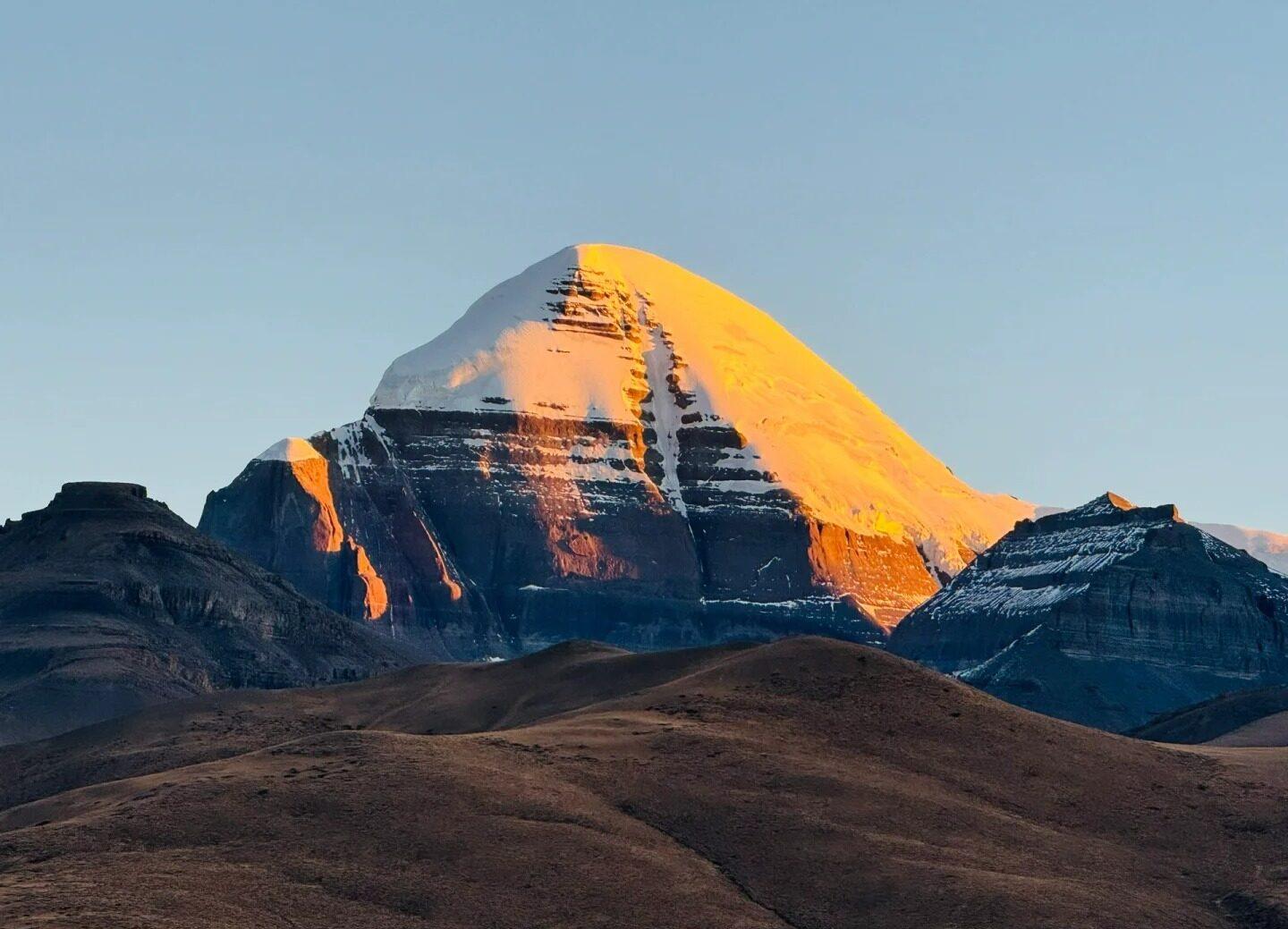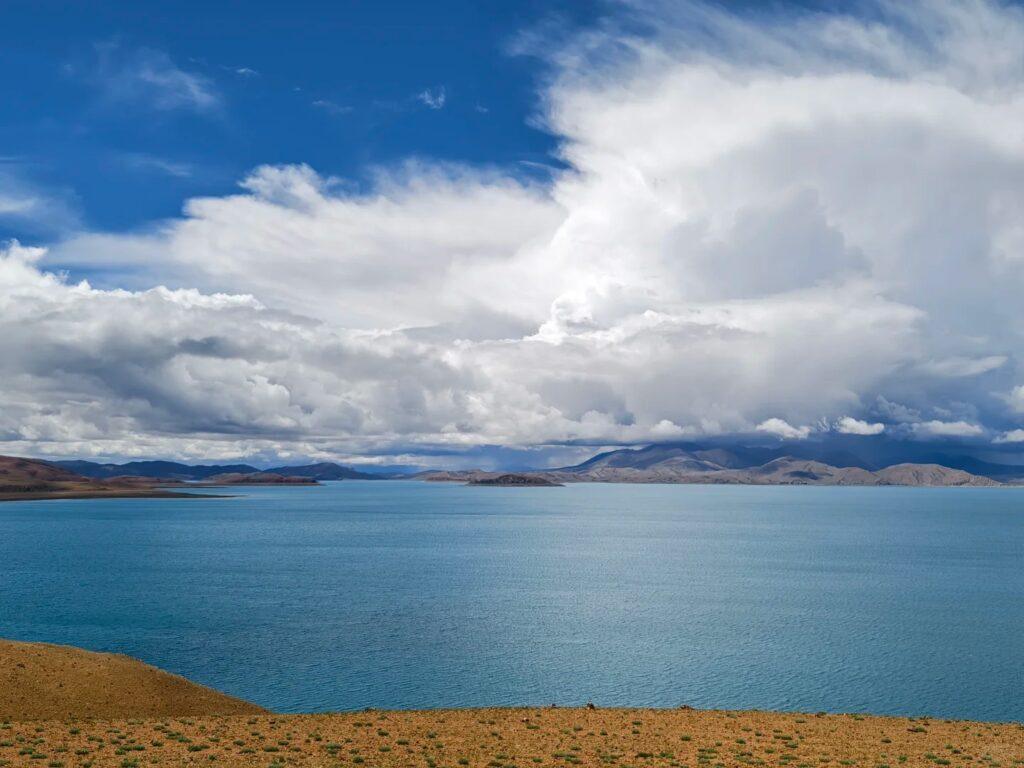Visiting Information
| Information | Details |
|---|---|
| Chinese Name | 冈仁波齐峰 (Gāng rén bō qí fēng) |
| Location and Address | Ngari Prefecture, Tibet Autonomous Region, China |
| Opening Hours | Open year-round, but access may be restricted during winter months (November to March) |
| Entrance Fee | Approximately 150 CNY for the Mount Kailash permit |
| How to Get There | By Air: Fly to Gunsa Airport in Ngari, then take a car to Darchen (base camp) By Land: Long-distance bus or private vehicle from Lhasa to Darchen (about 1,200 km) Local Transport: Hire a local guide and driver in Darchen for the kora |
| Best Time for Visit | May to October, with the best conditions typically in May, June, and September |
| Contact Info | Tibet Tourism Bureau: +86 891 6834372 (for travel permits and information) |
Overview
Mount Kailash, known as Gang Rinpoche in Tibetan, is a 6,638-meter (21,778 ft) peak in the Kailash Range of the Transhimalaya. Located in the Ngari Prefecture of Tibet, it is considered sacred in four religions: Hinduism, Buddhism, Jainism, and Bön. The mountain has never been climbed due to its religious significance. Instead, pilgrims and tourists perform a 52-kilometer circumambulation, known as the kora, around the mountain.
Historical Background
Mount Kailash has been a site of pilgrimage for thousands of years. In Hindu tradition, it is believed to be the abode of Lord Shiva and his consort Parvati. Buddhists associate it with Demchok, representing supreme bliss. For Jains, it is where their first Tirthankara attained liberation. The Bön religion, predating Buddhism in Tibet, also considers Kailash as a sacred site. Throughout history, the mountain has attracted spiritual seekers, adventurers, and scholars, contributing to its mystical reputation.
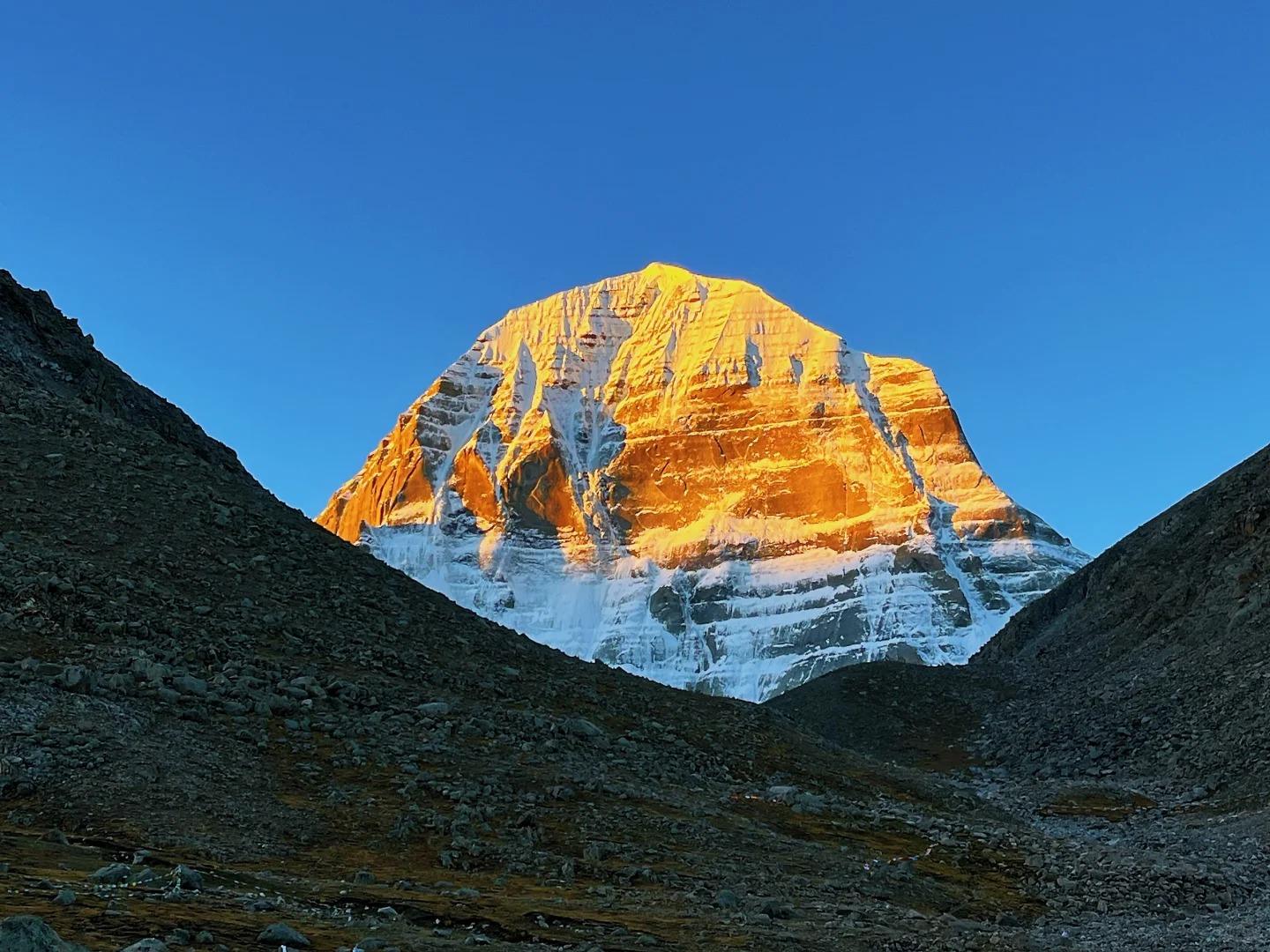
Architectural Features
- Natural Formation: Mount Kailash itself is a natural pyramid-shaped peak, distinct in its appearance from surrounding mountains. Its four faces are nearly symmetrical, adding to its unique and revered status.
- Kora Path: The pilgrimage circuit around the mountain is marked by prayer flags, mani stones (stones inscribed with mantras), and cairns. These human-made elements blend with the natural landscape, creating a spiritual atmosphere along the route.
- Darchen: This small town at the foot of Mount Kailash serves as the starting point for the kora. It has basic guesthouses and supplies for pilgrims and trekkers, representing the minimal human infrastructure in this remote area.
Cultural Importance
Mount Kailash holds immense cultural and spiritual significance across multiple religions. It is seen as the spiritual center of the universe in several traditions. The kora pilgrimage is believed to bring good fortune and wash away the sins of a lifetime. The mountain is also associated with numerous legends and mythologies, including being the source of four major rivers: the Indus, Sutlej, Brahmaputra, and Karnali. Its cultural importance extends beyond religious boundaries, symbolizing the unity of different faiths and the profound human connection to nature.
Surrounding Attractions
- Lake Manasarovar: Located near Mount Kailash, this freshwater lake is considered sacred in Hinduism and Buddhism. It’s believed that bathing in or drinking its waters can cleanse all sins. The lake’s serene beauty and spiritual significance make it a key part of the pilgrimage experience.
- Rakshas Tal: Also known as Ravana Tal, this salt water lake contrasts with the freshwater Manasarovar. In Hindu mythology, it’s associated with the demon king Ravana. The stark difference between the two adjacent lakes adds to the area’s mystical atmosphere.
- Tirthapuri Hot Springs: Located about 90 km from Mount Kailash, these hot springs are believed to have healing properties. Pilgrims often visit these springs after completing the Kailash kora, considering it a purifying experience.
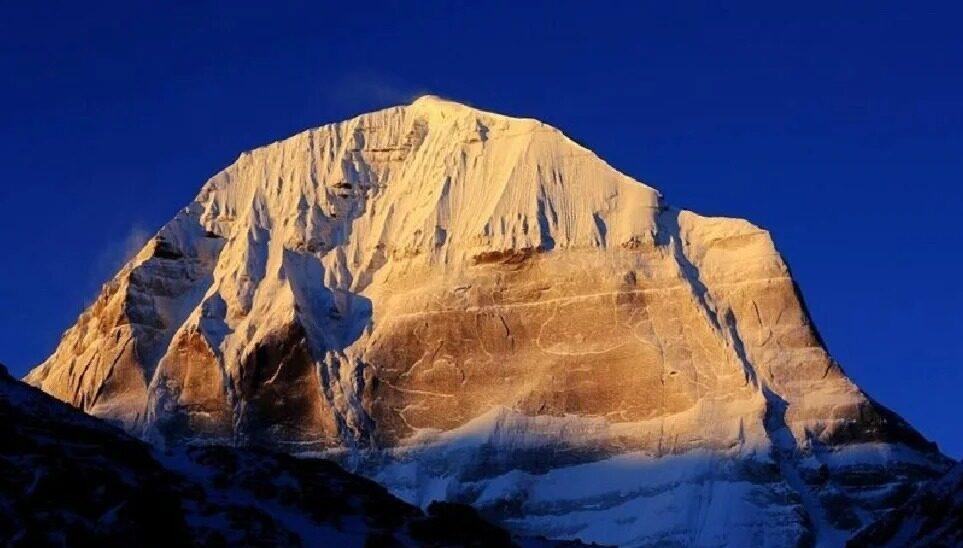
Photography Opportunities
- Mountain Views: The distinct pyramid shape of Mount Kailash offers stunning photographic opportunities, especially during sunrise and sunset when the light creates dramatic effects on the mountain’s faces. The best views are often from the southern face or from strategic points along the kora path.
- Lake Reflections: Both Lake Manasarovar and Rakshas Tal provide excellent opportunities for reflection photography, with Mount Kailash in the background. The calm waters of Manasarovar, in particular, can create mirror-like reflections of the surrounding landscape.
- Cultural Photography: The pilgrims performing the kora, prayer flags fluttering in the wind, and the devout at various points of worship offer rich subjects for cultural and portrait photography, capturing the spiritual essence of the place.
Modern Importance
- Spiritual Tourism: Mount Kailash continues to attract spiritual seekers and pilgrims from around the world, contributing to the growth of spiritual tourism in Tibet. This has led to improved, albeit still basic, facilities for visitors in the region.
- Environmental Conservation: The sacred status of Mount Kailash has helped in its preservation. There are ongoing efforts to balance pilgrimage activities with environmental protection, recognizing the fragile ecosystem of the high-altitude region.
- Scientific Interest: The unique geological features of Mount Kailash and its surrounding area continue to interest scientists. Studies in this region contribute to our understanding of the formation of the Himalayas and the Tibetan plateau.
- Cultural Preservation: As a symbol of religious harmony, Mount Kailash plays a role in preserving and promoting the diverse cultural heritage of Tibet and the surrounding regions. It serves as a focal point for discussions on cultural preservation in the face of modernization.
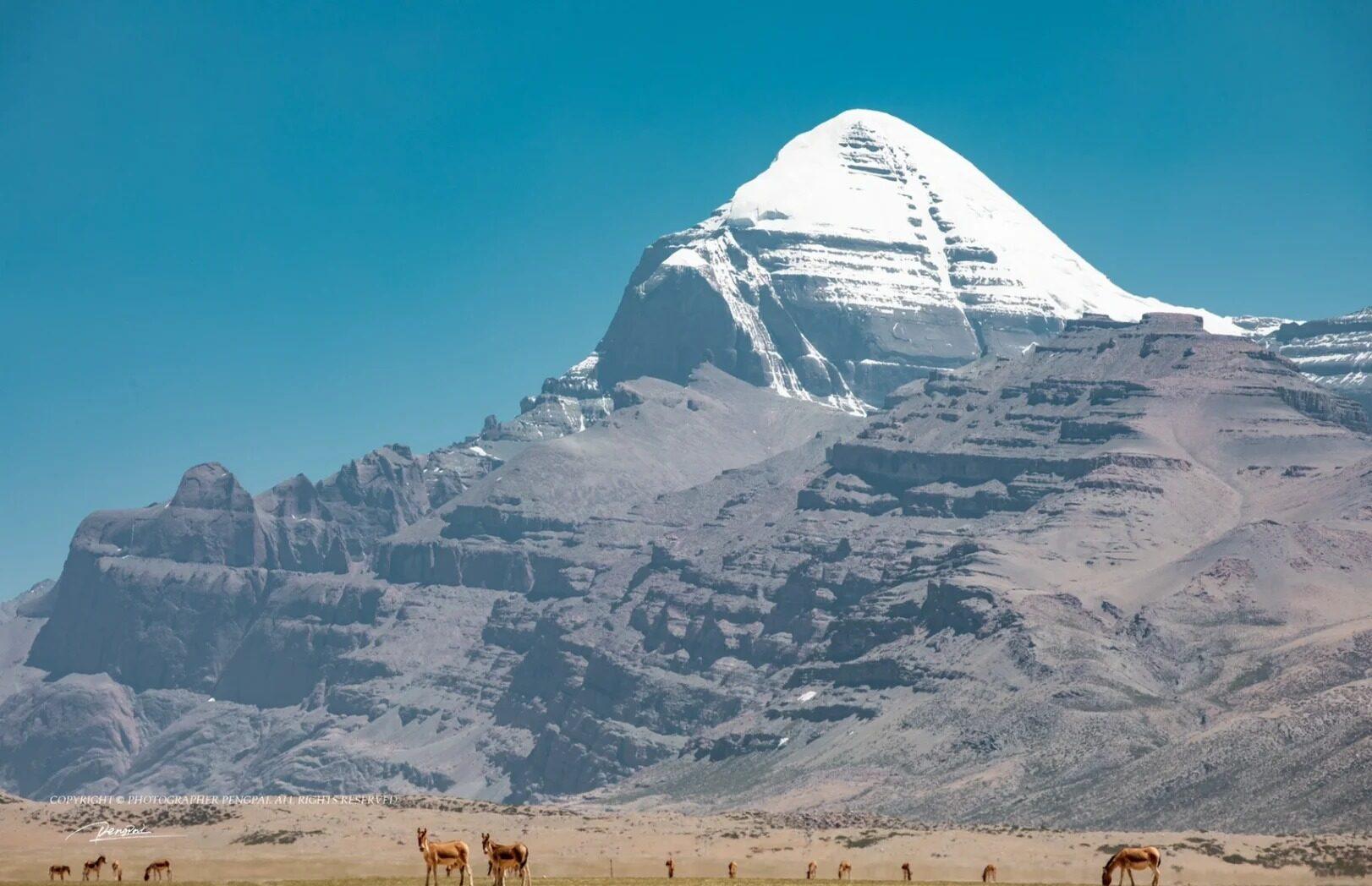
FAQ
- What is Mount Kailash famous for?
Mount Kailash is famous for its religious significance in Hinduism, Buddhism, Jainism, and Bön. It’s known for its distinctive pyramid shape, the sacred pilgrimage kora around it, and its status as an unclimbed peak. - What’s inside Mount Kailash?
As Mount Kailash is a natural mountain formation, there isn’t anything “inside” it in terms of man-made structures. Its interior has never been explored due to its sacred status. The mountain itself is solid rock. - Is Mount Kailash free?
While there’s no direct fee to view Mount Kailash, there are associated costs. These include travel permits (around 150 CNY), guide fees, and transportation costs. The overall trip to Mount Kailash can be quite expensive due to its remote location. - Is Mount Kailash worth visiting?
For those interested in spirituality, natural beauty, or unique cultural experiences, Mount Kailash is definitely worth visiting. It offers breathtaking landscapes and a profound sense of spiritual significance. However, it’s a challenging trip that requires good physical condition and careful planning. - What to do in Mount Kailash?
At Mount Kailash, visitors typically perform the kora (circumambulation) around the mountain, which takes about 3 days. Other activities include visiting nearby Lake Manasarovar, observing or participating in religious rituals, photography, and experiencing the unique Tibetan culture of the region. - How do I get to Mount Kailash in the local city?
The nearest town to Mount Kailash is Darchen. To reach Darchen, most visitors first travel to Lhasa (the capital of Tibet), then take a long road journey (about 1,200 km) by jeep or bus. Alternatively, you can fly to Gunsa Airport in Ngari Prefecture and then drive to Darchen. All visits must be arranged through licensed tour operators due to travel restrictions in Tibet. - How to visit Mount Kailash?
To visit Mount Kailash, you need to join an organized tour as independent travel is not allowed in this part of Tibet. The process involves obtaining Chinese and Tibetan permits, acclimatizing to the high altitude, and typically includes a multi-day journey from Lhasa to Darchen. Once at Darchen, most visitors undertake the 3-day kora around the mountain, either on foot or with the help of yaks or porters.


